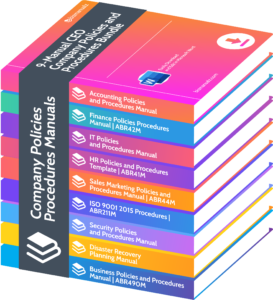What are Common CEO Public Relations Strategies?

Attention all aspiring CEOs, are you looking to improve your company’s public image and maintain a positive reputation? In today’s fast-paced and highly competitive business world, effective public relations strategies are crucial for success. This article will explore common strategies used by top CEOs to effectively manage their public image and enhance their company’s reputation. What are common CEO public relations strategies?
What Is CEO Public Relations
CEO public relations is the practice of a CEO utilizing strategies and actions to effectively manage their public image and reputation. This involves communicating and engaging with various stakeholders, such as employees, investors, customers, and the media, in order to shape public perception.
To establish themselves as credible, trustworthy, and influential leaders, CEOs may employ tactics such as media interviews, press releases, social media engagement, and public speaking engagements.
The goal of CEO public relations is to strengthen the company’s brand, cultivate strong relationships, effectively handle crises, and promote the CEO’s vision and values. It is a vital component in shaping public opinion and maintaining a positive corporate image.
Why Is CEO Public Relations Important?
The importance of CEO public relations cannot be overstated for a company’s success. It plays a vital role in building trust and credibility with stakeholders, including investors, employees, customers, and the general public.
Effective CEO PR not only enhances the company’s reputation but also attracts investors and fosters positive relationships with the media. It allows the CEO to effectively communicate the company’s vision and values, handle crisis situations, and demonstrate strong leadership. Additionally, CEO PR helps shape public perception, ensuring that the CEO is viewed as a competent and trustworthy leader.
In summary, CEO public relations is crucial for maintaining a positive image and establishing the CEO as a respected figurehead. In fact, studies show that 75% of consumers consider the CEO’s reputation when making a decision to purchase a company’s product or service.
What Are Common CEO Public Relations Strategies?
As the face and leader of a company, a CEO’s public image and reputation are crucial to the success of the organization. To maintain a positive public perception, CEOs must utilize various public relations strategies.
In this section, we will discuss the most common CEO public relations strategies and how they can benefit both the CEO and the company. From media relations to corporate social responsibility, each strategy plays a unique role in shaping and maintaining a CEO’s public image.
1. Media Relations
CEO public relations relies heavily on effective media relations, which involves managing relationships with journalists, reporters, and media outlets to shape public perception and maintain a positive image.
- Identify target media outlets and journalists relevant to your industry.
- Build relationships through networking, attending industry events, and reaching out to journalists.
- Create a media kit with key information about your company and CEO.
- Develop strategic press releases and pitches to generate media coverage.
- Respond promptly to media inquiries and provide accurate information.
- Prepare CEOs for interviews and media interactions through media training.
- Monitor media coverage and sentiment towards your company.
- Engage in crisis management by addressing negative media coverage effectively.
- Cultivate relationships with journalists by providing them with valuable insights and thought leadership.
- Utilize social media platforms to engage with journalists and share company news.
2. Thought Leadership
Thought leadership is a crucial aspect of CEO public relations, helping to establish the CEO as a trusted industry expert and influencer. Here are steps to cultivate thought leadership:
- Identify target audience: Understand the demographics and interests of the target audience.
- Research and develop expertise: Stay updated on industry trends and developments to provide insightful and valuable perspectives on thought leadership.
- Create and share valuable content: Produce thought-provoking articles, blog posts, white papers, or videos that offer unique insights and solutions related to thought leadership.
- Engage with the audience: Interact with the audience through social media, webinars, podcasts, or speaking engagements to foster discussions and build relationships centered around thought leadership.
- Collaborate with industry peers: Collaborate with other industry leaders through interviews, guest blogging, or participating in panel discussions to expand reach and credibility in the realm of thought leadership.
3. Crisis Management
Crisis management is a crucial aspect of CEO public relations, as it helps protect a company’s reputation during challenging times. Here are steps to effectively manage a crisis:
- Prepare: Develop a crisis management plan and identify potential risks.
- Respond: Act swiftly, communicate transparently, and take responsibility for the situation.
- Coordinate: Establish a crisis management team to handle the situation and delegate responsibilities.
- Monitor: Continuously monitor the situation and adjust strategies as needed.
- Communicate: Keep stakeholders informed through regular updates and provide accurate information.
- Resolve: Take appropriate actions to address the crisis and prevent future occurrences.
During a crisis, maintaining open communication, showing empathy, and taking decisive actions are essential. Remember, timely and effective Crisis Management can help protect a company’s reputation and rebuild trust.
4. Social Media Presence
A strong social media presence is crucial for CEOs to connect with stakeholders and enhance their personal brand. To develop an effective social media presence, follow these steps:
- Create profiles on relevant platforms such as LinkedIn, Twitter, and Instagram.
- Develop a clear brand voice and messaging strategy that aligns with your social media presence.
- Regularly post engaging content, including industry insights and updates, to keep your followers interested and informed.
- Engage with your followers by responding to comments and messages, showing that you value their input.
- Network with industry influencers and thought leaders to expand your reach and credibility.
- Utilize analytics to measure the reach, engagement, and overall impact of your social media presence.
- Continuously adapt and refine your social media strategy based on insights and feedback, ensuring that it remains effective and relevant.
5. Community Engagement
Community engagement is a crucial aspect of CEO public relations as it allows CEOs to connect with their local communities, build trust, and demonstrate their commitment to social responsibility. Here are some steps to effectively engage with the community:
- Identify the needs and issues of the community.
- Develop partnerships with local organizations and nonprofits.
- Participate in community events, such as volunteering or sponsorships.
- Engage with local schools and universities through mentorship or scholarship programs.
- Support local businesses and initiatives to stimulate economic growth.
- Actively listen to community feedback and address concerns.
- Communicate transparently and authentically with the community.
6. Brand Management
Brand management is a crucial aspect of CEO public relations, as it involves shaping and maintaining a positive brand image. Here are steps to effective brand management:
- Define brand identity: Clearly articulate the company’s mission, values, and unique selling proposition.
- Consistent messaging: Ensure that all communication aligns with the brand identity.
- Brand positioning: Identify the target audience and develop strategies to differentiate from competitors.
- Visual identity: Create a compelling logo, color scheme, and design elements that reflect the brand.
- Brand guidelines: Establish guidelines for employees to maintain consistency in all brand-related materials.
- Brand monitoring: Continuously monitor online and offline channels to manage and protect the brand’s reputation.
- Brand storytelling: Develop engaging narratives that effectively communicate the brand’s story and purpose to stakeholders.
7. Employee Communications
Employee communications play a crucial role in CEO public relations, fostering a positive and engaged workforce. Here are some steps to effectively carry out employee communications:
- Regularly communicate company updates and important information through internal newsletters or email updates.
- Hold regular town hall meetings to provide a platform for employees to ask questions and receive updates directly from the CEO.
- Establish an open-door policy where employees feel comfortable approaching the CEO with any concerns or ideas.
- Create platforms for employee feedback and suggestions, such as suggestion boxes or online forums.
- Recognize and appreciate employee achievements and milestones publicly.
- Ensure transparent and honest communication during times of change or uncertainty.
- Utilize effective strategies for Employee Communications to maintain a positive and engaged workforce.
8. Public Speaking Engagements
Public speaking is an essential aspect for CEOs to enhance their reputation, establish thought leadership, and build relationships with stakeholders. Here are steps to successfully excel in public speaking engagements:
- Prepare: Thoroughly research the audience and topic, outlining key messages to effectively deliver the speech.
- Practice: Rehearse the speech multiple times to refine delivery and ensure confidence.
- Engage: Connect with the audience through storytelling, examples, and interactive elements.
- Be Authentic: Share personal experiences and show vulnerability to resonate with the audience.
- Use Visuals: Utilize visual aids like slides or props to enhance understanding and engagement.
- Manage Nervousness: Practice relaxation techniques and focus on deep breathing to calm nerves.
- Connect with the Audience: Maintain eye contact, smile, and use inclusive language to foster connection.
- Handle Questions: Anticipate potential questions and prepare thoughtful responses.
- Evaluate and Improve: Collect feedback and reflect on the strengths and areas for improvement.
9. Industry Events and Conferences
Industry events and conferences are essential for CEO public relations as they provide valuable opportunities for networking, knowledge sharing, and showcasing industry expertise. To maximize the benefits of attending these events, follow these steps:
- Prioritize events that align with your industry and target audience.
- Research speakers and sessions to identify those that are relevant to your expertise.
- Prepare talking points and key messages to share during networking opportunities.
- Participate actively in panel discussions or give presentations to establish thought leadership.
- Engage with attendees through social media before, during, and after the event.
- Follow up with new connections to nurture relationships and explore collaboration opportunities.
Fact: Attending industry events and conferences can greatly enhance a CEO’s visibility, reputation, and potential to attract partners or investors.
10. Influencer Partnerships
Influencer partnerships are an effective CEO public relations strategy that can significantly enhance brand visibility and reach a wider audience. To establish successful influencer partnerships, follow these steps:
- Identify relevant influencers in your industry or niche.
- Research their audience demographics and engagement rates.
- Reach out to influencers with a personalized and genuine message.
- Offer mutually beneficial collaborations or partnerships.
- Clearly define expectations, goals, and compensation.
- Develop a creative and authentic content strategy.
- Monitor and track the performance of influencer campaigns.
- Engage with the influencer’s audience through comments and shares.
- Nurture long-term relationships with influencers for future collaborations.
- Evaluate the success of the partnership based on data and metrics.
Remember, when selecting influencers, prioritize relevance, authenticity, and alignment with your brand values. Building strong relationships with influencers can greatly enhance your brand’s reputation and expand its reach.
11. Corporate Social Responsibility
Corporate social responsibility (CSR) is a vital aspect of CEO public relations. It involves incorporating ethical practices and social initiatives into a company’s operations. Not only does CSR benefit society and the environment, but it also enhances a CEO’s reputation and builds trust with stakeholders.
Some common CSR strategies include:
- Supporting charitable causes
- Implementing sustainable practices
- Promoting diversity and inclusion
- Engaging in philanthropic activities
By actively participating in CSR efforts, CEOs demonstrate their dedication to making a positive impact on society and aligning their company’s values with social responsibility. This helps foster a positive public image and contributes to building a strong reputation for both the CEO and the organization.
12. Reputation Management
Reputation management is a vital aspect of CEO public relations. It involves actively shaping and safeguarding the public perception of the CEO and their representing company. Effective reputation management strategies are crucial in building trust, credibility, and a positive image among stakeholders and the general public. These strategies may include:
- Monitoring and addressing online reviews and comments.
- Responding transparently to customer complaints.
- Managing crises promptly and transparently.
- Showcasing ethical practices.
A prime example that highlights the significance of reputation management is the story of a CEO who promptly and empathetically handled a product recall, prioritizing customer safety and receiving praise for their responsible actions.
13. Investor Relations
Investor relations is a vital component of CEO public relations, as it focuses on communication and relationship-building with shareholders, analysts, and potential investors. Effective strategies for investor relations include:
- consistent financial reporting
- hosting investor conferences
- conducting earnings calls
- participating in industry events
CEOs can gauge the success of their investor relations by tracking metrics such as stock performance, analyst coverage, and investor sentiment. By prioritizing transparency, providing accurate financial information, and addressing investor concerns, CEOs can bolster investor confidence and attract potential investors to contribute to their company’s growth.
14. Executive Visibility
Executive visibility is a crucial aspect of CEO public relations. It refers to the presence and engagement of the CEO with the public, stakeholders, and industry peers. By actively participating in events, conferences, and social media, CEOs can enhance their visibility and establish themselves as thought leaders. This helps build credibility, trust, and a positive reputation for both the CEO and the company.
To improve executive visibility, CEOs can consider:
- Speaking engagements
- Media interviews
- Industry events
- Thought leadership platforms
By measuring the reach and impact of these efforts, CEOs can assess the success of their PR strategies and make necessary adjustments.
How Can CEOs Measure the Success of Their PR Strategies?
Measuring the success of a CEO’s public relations strategies is crucial for evaluating their effectiveness and making informed decisions. To do so, CEOs can follow these steps:
- Set clear objectives: Clearly define specific goals and desired outcomes that align with the overall PR strategy.
- Establish metrics: Identify key performance indicators (KPIs) that can be measured, such as media coverage, social media engagement, or website traffic.
- Track and analyze data: Regularly monitor and analyze data related to the established KPIs to gauge progress and identify areas for improvement.
- Compare to benchmarks: Compare the results against industry benchmarks or previous PR campaigns to assess performance and identify trends.
- Solicit feedback: Gather feedback from stakeholders, including employees, customers, and the media, to gain insight into the perception and impact of the PR strategy.
In 2017, Apple’s CEO, Tim Cook, successfully implemented a PR strategy to address concerns about the company’s environmental impact. By committing to using 100% renewable energy and reducing carbon emissions, Apple not only improved its brand reputation but also experienced a boost in sales and customer loyalty. This serves as a prime example of how CEOs can measure the success of their PR strategies through tangible outcomes and positive feedback from stakeholders.
Frequently Asked Questions

What are Common CEO Public Relations Strategies?
There are several common CEO public relations strategies, including:
- Media interviews and appearances
- Speaking engagements at conferences and events
- Thought leadership articles and blog posts
- Social media presence and engagement
- Corporate social responsibility initiatives
- Crisis management
How do media interviews and appearances benefit a CEO’s public relations strategy?
Media interviews and appearances allow a CEO to share their expertise and insights with a wider audience, building their reputation as a thought leader and increasing brand visibility.
Why are speaking engagements important for a CEO’s public relations strategy?
Speaking at conferences and events allows a CEO to establish themselves as an industry expert, network with other professionals, and garner media attention.
What is the role of thought leadership articles and blog posts in a CEO’s public relations strategy?
Thought leadership articles and blog posts give a CEO a platform to share their unique perspectives and insights on industry trends and issues, boosting their credibility and thought leadership status.
How can a CEO’s social media presence and engagement impact their public relations strategy?
Having an active and engaging presence on social media allows a CEO to connect with their audience, share company news and updates, and humanize their brand.
What is the significance of corporate social responsibility initiatives in a CEO’s public relations strategy?
Participating in corporate social responsibility initiatives showcases a CEO’s commitment to making a positive impact in society and can enhance their brand image and reputation.
















Leave a Reply